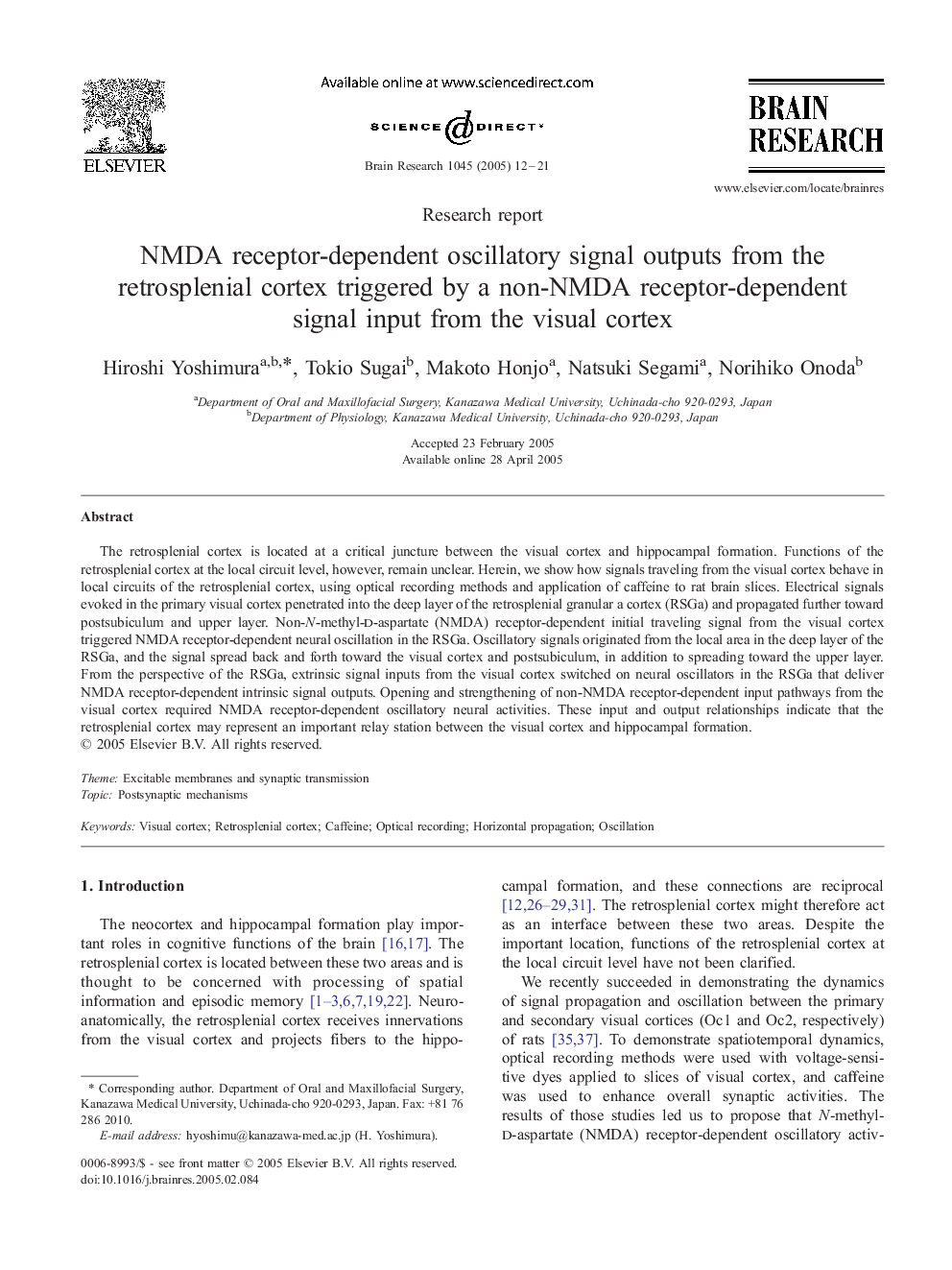| Article ID | Journal | Published Year | Pages | File Type |
|---|---|---|---|---|
| 9416278 | Brain Research | 2005 | 10 Pages |
Abstract
The retrosplenial cortex is located at a critical juncture between the visual cortex and hippocampal formation. Functions of the retrosplenial cortex at the local circuit level, however, remain unclear. Herein, we show how signals traveling from the visual cortex behave in local circuits of the retrosplenial cortex, using optical recording methods and application of caffeine to rat brain slices. Electrical signals evoked in the primary visual cortex penetrated into the deep layer of the retrosplenial granular a cortex (RSGa) and propagated further toward postsubiculum and upper layer. Non-N-methyl-d-aspartate (NMDA) receptor-dependent initial traveling signal from the visual cortex triggered NMDA receptor-dependent neural oscillation in the RSGa. Oscillatory signals originated from the local area in the deep layer of the RSGa, and the signal spread back and forth toward the visual cortex and postsubiculum, in addition to spreading toward the upper layer. From the perspective of the RSGa, extrinsic signal inputs from the visual cortex switched on neural oscillators in the RSGa that deliver NMDA receptor-dependent intrinsic signal outputs. Opening and strengthening of non-NMDA receptor-dependent input pathways from the visual cortex required NMDA receptor-dependent oscillatory neural activities. These input and output relationships indicate that the retrosplenial cortex may represent an important relay station between the visual cortex and hippocampal formation.
Keywords
Related Topics
Life Sciences
Neuroscience
Neuroscience (General)
Authors
Hiroshi Yoshimura, Tokio Sugai, Makoto Honjo, Natsuki Segami, Norihiko Onoda,
